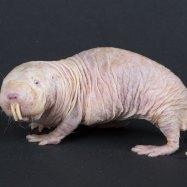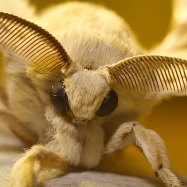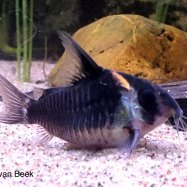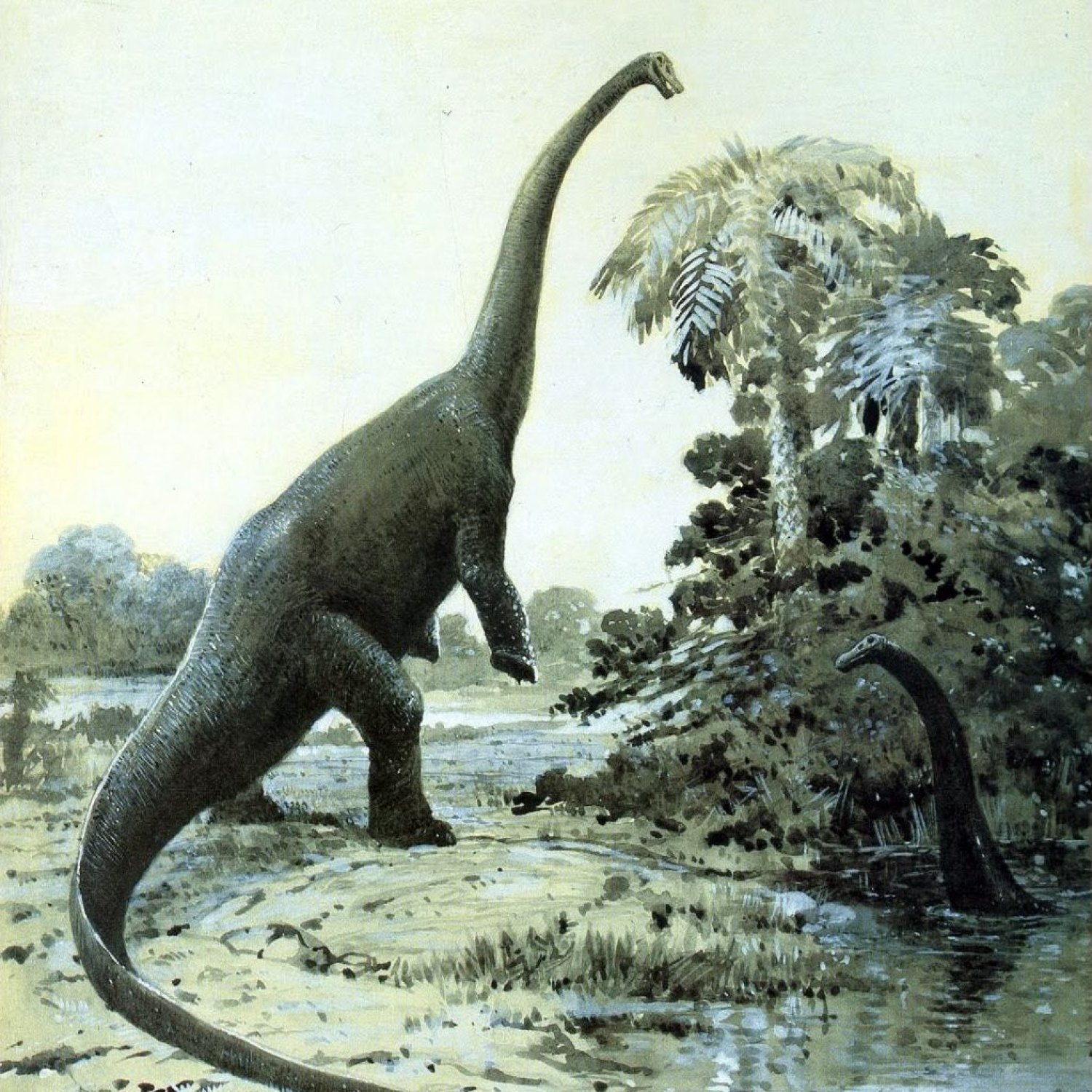
Diplodocus
Up to 90 feet
The Diplodocus, also known as the Double-Beam, is an ancient dinosaur that roamed the earth millions of years ago. With a length of up to 90 feet, this long and slender creature belonging to the Diplodocidae family is the longest dinosaur on record. Fossils of Diplodocus have been found in the Morrison Formation, located in Colorado, Wyoming, and Utah. Its enormous size and unique body shape have captivated scientists and dinosaur enthusiasts alike.
Animal Details Summary:
Common Name: Diplodocus
Kingdom: Animalia
Habitat: Terrestrial
The Mighty Diplodocus: Explore the Fascinating World of this Legendary Dinosaur
The world we live in today is filled with incredible and diverse creatures. From the tiniest insects to the mighty elephants, each animal has its unique characteristics and plays a crucial role in maintaining balance in our ecosystem. However, some animals have left a lasting impression on our minds and have become legends in their own right.One such legendary creature is the Diplodocus, a massive, long-necked dinosaur that roamed the Earth over 150 million years ago Diplodocus. Often overshadowed by its cousin, the T-rex, the Diplodocus is a fascinating creature with many remarkable features. Let's take a deeper look into the world of this legendary dinosaur and discover what makes it truly one of a kind.
A Historical Discovery
Before we dive into the features and characteristics of the Diplodocus, it's essential to understand how this creature came to be known to us. The first Diplodocus fossil was discovered in 1877 by a paleontologist named S.W. Williston in the Western United States. Williston named the creature Diplodocus, which means "double-beam" in reference to its unique chevron-shaped bones in its vertebrae.Since then, many more fossils have been found, providing us with a wealth of information about the Diplodocus and its ancient world. These fossils are a crucial part of our understanding of Earth's history and the evolution of different species Donkey.
The Basics: Scientific Classification
Before we delve deeper, let's understand the scientific classification of the Diplodocus. This giant dinosaur belongs to the Animalia kingdom, the same as all other animals. It falls under the phylum Chordata, which includes all animals with a backbone.The Diplodocus belongs to the class Sauropsida, which includes all reptiles and birds. As a reptile, the Diplodocus belongs to the order Saurischia, which translates to "lizard hips." It is also a member of the family Diplodocidae, which includes other long-necked dinosaurs.
The Habitat and Distribution of the Diplodocus
The Diplodocus was a terrestrial creature, meaning it lived on land and not in water. Its habitat was primarily found in North America, specifically in the Morrison Formation in Colorado, Wyoming, and Utah. This area was home to many other dinosaurs, making it a thriving ecosystem for these ancient creatures.However, the Diplodocus was not confined to just one region. Fossil evidence suggests that they could have also roamed in other parts of the world, such as Argentina and even Africa.
The Feeding Method of the Diplodocus
The Diplodocus' most defining characteristic is its long neck. It is estimated that its neck could reach up to 26 feet in length, almost as long as its entire body. This elongated neck was used for feeding, allowing the Diplodocus to reach tall trees and vegetation that other dinosaurs could not.As a herbivore, the Diplodocus mainly fed on plants and leaves. Its teeth were uniquely shaped, with pencil-like spikes that helped it strip leaves off branches. These teeth were continuously replaced throughout its life, much like modern-day herbivores, allowing it to constantly consume food.
A Gray, Long, and Slender Body
The Diplodocus was a massive creature, reaching up to 90 feet in length and weighing over 12 tons. Despite its size, this dinosaur had a slender body, with a narrow, pointed head and a long, whip-like tail. Its body was also covered in scaly skin, much like modern-day reptiles, protecting it from the harsh environment.Despite its massive size, the Diplodocus was not a fast runner. Its long and slender limbs were not built for speed, and it is believed that it could only reach a maximum speed of 15 miles per hour. This may have made it vulnerable to predator attacks, but its size and strength made it a formidable opponent.
A Life Span of Up to 100 years
One of the most intriguing aspects of the Diplodocus is its potential lifespan. Based on fossil evidence, it is believed that this dinosaur could live up to 100 years. This is an exceptionally long lifespan for any animal, and it is still not fully understood why the Diplodocus could live for so long.Some theories suggest that its slow metabolism and large body size may have allowed it to live longer. However, without any living descendants, it is challenging to determine the exact reason for its longevity.
The Diplodocus in Modern Culture
Despite its extinction over 150 million years ago, the Diplodocus continues to fascinate people even today. It has made appearances in popular culture, from movies and TV shows to toys and video games. Its massive size and unique features have captivated the imagination of people around the world.In fact, a cast skeleton of a Diplodocus, named "Dippy," has been on display at the Natural History Museum in London since 1905, making it one of the most iconic displays in the museum. This skeleton has inspired many to learn more about this legendary dinosaur and its ancient world.
The Future of the Diplodocus
Despite its popularity, the Diplodocus is still shrouded in mystery, and many questions about its habits and behavior remain unanswered. However, thanks to advancements in technology and paleontological research, we are continuously learning more about this incredible creature.Scientists are using cutting-edge techniques, such as 3D printing, to create models and replicas of dinosaur fossils, including the Diplodocus. This not only allows us to get a better understanding of their anatomy but also helps to preserve their fragile remains.
Moreover, with the discovery of new fossils and the continued research on existing ones, we are continually gaining more insight into how the Diplodocus lived and interacted with its environment. This knowledge not only helps us understand the past but also has implications for the future of our planet and the need to protect our diverse animal species.
The Legacy of the Diplodocus
The Diplodocus may have roamed the Earth millions of years ago, but its impact is still felt today. Its massive size and unique features have made it an iconic symbol of the prehistoric world, leaving a lasting impression on our culture and imagination.Moreover, the Diplodocus is a crucial part of our understanding of evolution and the history of life on Earth. Without the discovery of its fossils, we would not have a complete picture of the diverse creatures that once inhabited our planet long before humans existed.
From its impressive size to its long and slender body, the Diplodocus is a true marvel of nature. Its legacy continues to live on, inspiring new discoveries and fueling our fascination with dinosaurs and the ancient world. Who knows what other secrets the Diplodocus will reveal to us in the future, but one thing is for sure- its impact will never be forgotten.

Diplodocus
Animal Details Diplodocus - Scientific Name: Diplodocus
- Category: Animals D
- Scientific Name: Diplodocus
- Common Name: Diplodocus
- Kingdom: Animalia
- Phylum: Chordata
- Class: Sauropsida
- Order: Saurischia
- Family: Diplodocidae
- Habitat: Terrestrial
- Feeding Method: Herbivore
- Geographical Distribution: North America
- Country of Origin: United States
- Location: Morrison Formation in Colorado, Wyoming, and Utah
- Animal Coloration: Gray
- Body Shape: Long and slender
- Length: Up to 90 feet
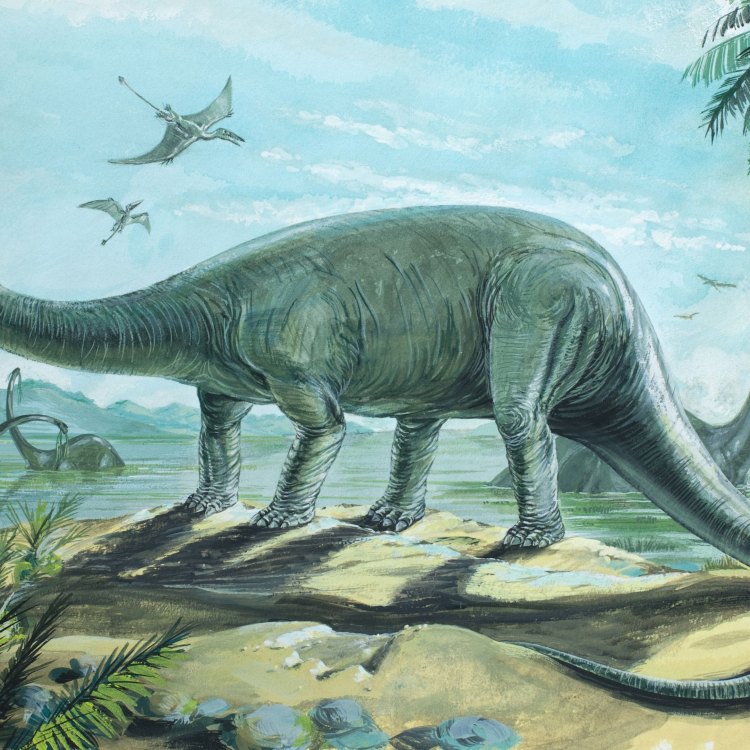
Diplodocus
- Adult Size: Up to 90 feet long, 15 feet tall at the hips, and weighed up to 25-30 tons
- Average Lifespan: Unknown
- Reproduction: Sexual
- Reproductive Behavior: Unknown
- Sound or Call: Unknown
- Migration Pattern: Unknown
- Social Groups: Unknown
- Behavior: Gentle and non-aggressive
- Threats: Extinction (Fossils indicate they lived during the Late Jurassic period around 156-145 million years ago)
- Conservation Status: Extinct
- Impact on Ecosystem: Diplodocus played a role in shaping the landscape and ecosystem through its feeding habits.
- Human Use: Fossils are popular exhibits in museums.
- Distinctive Features: Long neck and tail, small head, peg-like teeth, and bony plates along its back.
- Interesting Facts: Diplodocus is one of the longest dinosaurs that ever lived.
- Predator: Large carnivorous dinosaurs such as Allosaurus.
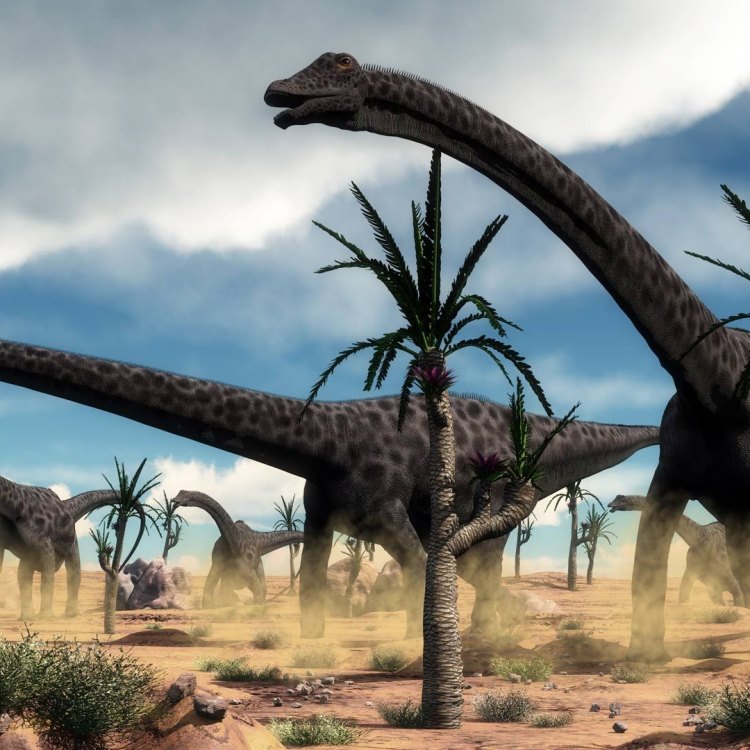
Diplodocus
The Gentle Giant of the Jurassic Era: All About Diplodocus
When we think of dinosaurs, we often imagine terrifying creatures, towering over us with sharp teeth and powerful claws. But there was one dinosaur that was quite the opposite. Diplodocus, the gentle giant of the Late Jurassic period, was a peaceful herbivore that roamed the Earth over 150 million years ago.With an adult size of up to 90 feet long, 15 feet tall at the hips, and weighing up to 25-30 tons, Diplodocus was one of the longest and largest dinosaurs to have ever lived PeaceOfAnimals.Com. But despite its immense size, Diplodocus was known for its gentle and non-aggressive behavior. In this article, we will delve deeper into the unique features and behaviors of this fascinating dinosaur.
Ambiguous Beginnings and Mysterious Reproduction
Diplodocus was first discovered in 1877 by paleontologist S.W. Williston in Colorado, USA. However, its initial skeleton was not fully assembled until a few years later. This led to some ambiguity surrounding the dinosaur's classification and size. It wasn't until 1921, when fossil hunter Earl Douglass unearthed a complete Diplodocus skeleton in Wyoming, that its true size and features were revealed.One of the most intriguing aspects of Diplodocus is its reproductive behavior Decorator Crab. While we know that Diplodocus reproduced sexually, little else is known about its mating rituals and reproductive patterns. This is due to the scarcity of fossils that can provide insight into these behaviors. But one thing is for sure, the reproduction of these enormous creatures must have been a sight to behold.
The Sound of Silence
Unlike some dinosaurs that are known for their loud roars, Diplodocus remains a mystery when it comes to its vocalizations. Fossils do not provide any evidence of a vocal organ, and scientists speculate that it may have been a silent creature. This begs the question, how did Diplodocus communicate with other members of its species? Perhaps it used body language, like many animals do today, or maybe it had a secret sound that has yet to be discovered.A Life of Unknown Length
The average lifespan of Diplodocus remains a mystery, as fossils do not provide any evidence of its age at death. However, scientists estimate that it lived for several decades, given its slow growth rate and the size it reached. This means that Diplodocus had a long life, spanning over many years, with its fair share of changes in the environment and potentially even adaptations to its own body.A Migration Pattern Lost in Time
With the absence of any fossil evidence, the migration patterns of Diplodocus are also unknown. Many herbivorous dinosaurs were known to migrate in search of food, water, and better living conditions. Based on its large size, it is plausible that Diplodocus may have followed a similar pattern. However, without any concrete evidence, it remains a mystery and open to speculation.A Solitary Life?
Another aspect of Diplodocus that is still debated among scientists is its social groups. While some researchers believe that Diplodocus lived a solitary life, others hypothesize that they may have lived in herds. The lack of any evidence of herding behavior in fossils makes it difficult to determine the truth. However, given that Diplodocus was a massive dinosaur, it is possible that they may have lived in small groups for safety and protection.The Shaper of Landscapes and Ecosystems
Despite its gentle nature, Diplodocus played an essential role in shaping the landscape and ecosystem during its time on Earth. With its long neck and tail, it was able to reach tall trees and vegetation, influencing the growth and distribution of plant life. The constant movement and feeding habits of Diplodocus also played a significant role in the spreading of seeds and other plant materials.Furthermore, the presence of Diplodocus in different habitats would have created diverse microclimates, providing shelter and food for other smaller animals. This would have had a ripple effect on the ecosystem, making Diplodocus a crucial player in maintaining balance and biodiversity.
The Unsolved Mystery of Extinction
Sadly, Diplodocus, along with other dinosaurs, became extinct around 65 million years ago. Fossils indicate that they lived during the Late Jurassic period, between 156-145 million years ago. The exact cause of their extinction is still an unsolved mystery, with different theories ranging from climate change to asteroid impact.One thing is for sure, Diplodocus, like other dinosaurs of its time, could not adapt to the rapidly changing environment and disappeared from the face of the Earth. However, their fossils continue to fascinate and intrigue us, giving us a glimpse into the past and helping us understand the evolution of life on our planet.
The Legacy of Diplodocus: Fossils in Museums
The discovery of Diplodocus fossils has captivated the world, and their popularity continues to this day. The first complete Diplodocus skeleton was displayed at the American Museum of Natural History in New York in 1905, drawing large crowds and sparking an interest in dinosaurs.Since then, Diplodocus fossils have been found all over the world, and they are popular exhibits in museums, with replicas and reconstructions being displayed in various countries. These fossils provide valuable insights into the life and features of this amazing dinosaur, leaving a lasting legacy for generations to come.
A Creature of Distinct Features
Diplodocus is easily recognizable due to its distinctive features. Its most prominent feature is undoubtedly its long neck and tail. The neck could reach up to 26 feet long, and the tail could measure up to 45 feet, making up most of its body length. This unique adaptation gave Diplodocus the ability to reach tall vegetation, which was essential for its survival.Another notable feature of Diplodocus is its small head, which was only about 2 feet long. Its jaws were equipped with peg-like teeth, which were not suitable for chewing tough plant materials. Instead, Diplodocus likely swallowed large chunks of vegetation whole, which were later ground down in its muscular gizzard.
Also, Diplodocus had a row of small bony plates run along its back, likely for defense against predators. The plates were not attached to its spine and could move independently, serving as protective armor for the dinosaur.
Diplodocus: A Record-Breaking Dinosaur
Diplodocus is not just a gentle giant; it is also a record-breaking dinosaur. It is one of the longest dinosaurs to have ever lived, with some specimens measuring up to 90 feet long. Its impressive body size and weight also make it one of the largest dinosaurs, with a weight of up to 30 tons, about the same as four elephants.Predators of Diplodocus
Despite its immense size, Diplodocus was not invincible. Large carnivorous dinosaurs, such as Allosaurus, preyed upon Diplodocus. Fossil evidence suggests that Diplodocus may have even had a symbiotic relationship with smaller animals that could have fed on parasites and insects on its body. This would have provided a layer of defense against predators and proved beneficial for both parties.In Conclusion
Diplodocus, the gentle giant of the Jurassic era, may have gone extinct millions of years ago, but its legacy continues to captivate us today. From its massive size and unique features to its peaceful nature and role in shaping the ecosystem, Diplodocus is truly one of the most fascinating dinosaurs to have ever roamed the Earth. As we continue to excavate and study more about this magnificent creature, who knows what other mysteries and insights we may uncover.
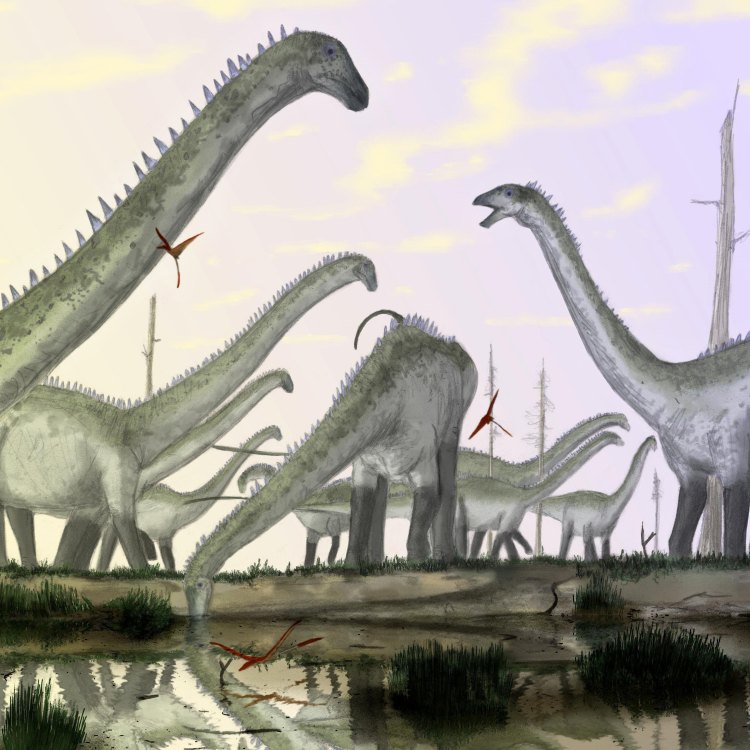
The Mighty Diplodocus: Explore the Fascinating World of this Legendary Dinosaur
Disclaimer: The content provided is for informational purposes only. We cannot guarantee the accuracy of the information on this page 100%. All information provided here may change without prior notice.


